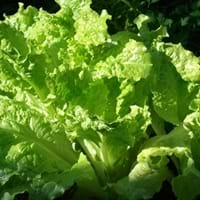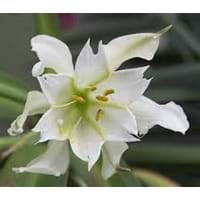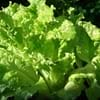Life Span
Annual
Perennial
Type
Vegetable
Bulb or Corm or Tuber
Origin
Egypt
South America
Types
Not available
Pamianthe cardenasii , Pamianthe parviflora , Pamianthe peruviana
Number of Varieties
Not Available
Habitat
Cold Regions
All sorts of environments
USDA Hardiness Zone
Not Available
8-10
AHS Heat Zone
Not Available
10-8
Sunset Zone
Not Available
21,22
Habit
Rosette/Stemless
Clump-Forming
Flower Color
Not Available
White
Flower Color Modifier
Not Available
Bicolor
Fruit Color
Not Available
Green
Leaf Color in Spring
Not Available
Dark Green
Leaf Color in Summer
Not Available
Light Green
Leaf Color in Fall
Not Available
Several shades of Green
Leaf Color in Winter
Not Available
Light Green
Leaf Shape
Spoon Shaped
Strap shaped
Plant Season
Not Available
Spring, Summer, Fall
Sunlight
Full Sun, Partial Sun
Partial Sun, Partial shade
Growth Rate
Not Available
Fast
Type of Soil
Not Available
Loam, Sand
The pH of Soil
Not Available
Acidic, Neutral, Alkaline
Soil Drainage
Not Available
Average
Bloom Time
Not Available
Spring, Late Spring, Early Summer, Summer, Late Summer
Repeat Bloomer
Not Available
No
Tolerances
Not Available
Drought
Where to Plant?
Container, Ground
Ground, Pot
How to Plant?
Seedlings
Offsets
Plant Maintenance
Medium
Medium
Watering Requirements
Average Water Needs, Needs Very high moisture
Keep the ground moist but not water-logged
In Summer
Lots of watering
Lots of watering
In Spring
Moderate
Moderate
In Winter
Average Water
Average Water
Soil pH
Not Available
Acidic, Neutral, Alkaline
Soil Type
Not Available
Loam, Sand
Soil Drainage Capacity
Not Available
Average
Sun Exposure
Full Sun, Partial Sun
Partial Sun, Partial shade
Pruning
Remove damaged leaves, Remove dead branches, Remove dead leaves
Pinch or prune as they grow to promote branching and bushiness, Remove damaged leaves, Remove dead branches, Remove dead leaves, Requires little pruning
Fertilizers
10-10-10, All-Purpose Liquid Fertilizer
All-Purpose Liquid Fertilizer, High phosphorus
Pests and Diseases
Aphids, Armyworm, Beetles, Leafminers, Molecrickets, Red blotch, Thripes, Whiteflies
Leaf spot, Mosaic viruses
Plant Tolerance
Drought
Drought
Flower Petal Number
Not Available
Single
Showy Fruit
Not Available
No
Edible Fruit
Not Available
No
Fragrant Flower
Not Available
No
Fragrant Fruit
Not Available
No
Fragrant Leaf
Not Available
No
Fragrant Bark/Stem
Not Available
No
Showy Foliage
Not Available
No
Showy Bark
Not Available
No
Foliage Texture
Bold
Coarse
Foliage Sheen
Not Available
Glossy
Invasive
Not Available
No
Self-Sowing
Not Available
Yes
Attracts
Aphids, Caterpillar, Snails, Whiteflies
Bees, Birds, Bumblebees, Butterflies, Hummingbirds, pollinators
Allergy
Food Allergy, Hives, Swollen Lips
Unknown
Aesthetic Uses
Not Used For Aesthetic Purpose
Beautification, Bouquets, Ornamental use, Showy Purposes
Beauty Benefits
Glowing Skin, Improve skin tone, Skin Problems
No Beauty Benefits
Environmental Uses
Air purification
Air purification
Medicinal Uses
Fiber, Insomnia, Rich in protein
No Medicinal Use
Part of Plant Used
Leaves, Seeds, Stem
Not Available
Other Uses
Culinary use, Food for animals, Used as a nutritious food item, Used As Food
Beneficial species for attracting pollinators, Decoration Purposes
Used As Indoor Plant
Yes
No
Used As Outdoor Plant
Yes
Yes
Garden Design
Edible, Vegetable
Bog Garden, Container, Feature Plant, Foundation, Mixed Border, Water Gardens
Botanical Name
Lactuca sativa
HYMENOCALLIS longipetala
Common Name
Lettuce
Peruvian Daffodil, Spiderlily
In Hindi
सलाद
peruvian daffodil
In German
Salat
peruvian daffodil
In French
Salade
peruvian daffodil
In Spanish
Lechuga
Pamianthe
In Greek
Μαρούλι
peruvian daffodil
In Portuguese
Alface
peruvian daffodil
In Polish
Sałata
peruvian daffodil
In Latin
lactuca
peruvian daffodil
Phylum
Magnoliophyta
Magnoliophyta
Class
Magnoliopsida
Liliopsida
Order
Asterales
Asparagales
Family
Asteraceae
Amaryllidaceae
Clade
Angiosperms, Asterids, Eudicots
Angiosperms, Monocots
Tribe
Cichorieae
Clinantheae
Subfamily
Not Available
Amaryllidoideae
Number of Species
Not Available
Not Available
Properties of Lettuce and Peruvian Daffodil
Wondering what are the properties of Lettuce and Peruvian Daffodil? We provide you with everything About Lettuce and Peruvian Daffodil. Lettuce doesn't have thorns and Peruvian Daffodil doesn't have thorns. Also Lettuce does not have fragrant flowers. Lettuce has allergic reactions like Food Allergy, Hives and Swollen Lips and Peruvian Daffodil has allergic reactions like Food Allergy, Hives and Swollen Lips. Compare all the properties and characteristics of these two plants. Find out which of these plant can be used as indoor plant. If you are interested to decorate your house and garden, find out aesthetic uses, compare them and select the plant which will beautify your surrounding. Along with beautification, try comparing medicinal and edible uses of Lettuce and Peruvian Daffodil and you can choose the plant having best and most benefits.
Season and Care of Lettuce and Peruvian Daffodil
Season and care of Lettuce and Peruvian Daffodil is important to know. While considering everything about Lettuce and Peruvian Daffodil Care, growing season is an essential factor. Lettuce season is Not Available and Peruvian Daffodil season is Not Available. The type of soil for Lettuce is Not Available and for Peruvian Daffodil is Loam, Sand while the PH of soil for Lettuce is Not Available and for Peruvian Daffodil is Acidic, Neutral, Alkaline.
Lettuce and Peruvian Daffodil Physical Information
Lettuce and Peruvian Daffodil physical information is very important for comparison. Lettuce height is 510.00 cm and width 7.60 cm whereas Peruvian Daffodil height is 61.00 cm and width 61.00 cm. The color specification of Lettuce and Peruvian Daffodil are as follows:
Lettuce flower color: Not Available
Lettuce leaf color: Not Available
Peruvian Daffodil flower color: White
- Peruvian Daffodil leaf color: Dark Green
Care of Lettuce and Peruvian Daffodil
Care of Lettuce and Peruvian Daffodil include pruning, fertilizers, watering etc. Lettuce pruning is done Remove damaged leaves, Remove dead branches and Remove dead leaves and Peruvian Daffodil pruning is done Pinch or prune as they grow to promote branching and bushiness, Remove damaged leaves, Remove dead branches, Remove dead leaves and Requires little pruning. In summer Lettuce needs Lots of watering and in winter, it needs Average Water. Whereas, in summer Peruvian Daffodil needs Lots of watering and in winter, it needs Average Water.



